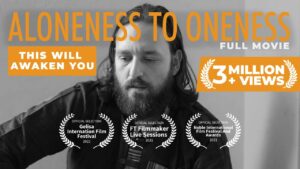Saying Yes to Adventure: Exploring the Yes Theory YouTube Channel
The Yes Theory YouTube Channel is a vibrant and inspiring platform dedicated to the pursuit of adventure, personal growth, and the power of saying “yes” to life’s endless possibilities. Founded by four friends – Thomas Brag, Matt Dajer, Ammar Kandil, and Derin Emre – Yes Theory has captured the hearts and imaginations of millions around the world with their daring escapades, heartwarming stories, and transformative message.
At the heart of the Yes Theory philosophy is the belief that life begins at the edge of your comfort zone. Through a series of daring challenges, spontaneous adventures, and acts of kindness, the Yes Theory team demonstrates the profound impact that embracing discomfort and saying “yes” to new experiences can have on one’s life.
From skydiving over Dubai and hitchhiking across Europe to surprising strangers with random acts of kindness and challenging societal norms, Yes Theory inspires viewers to break free from the constraints of fear, doubt, and self-limiting beliefs and embrace a life of adventure, connection, and fulfillment.
But perhaps what sets the Yes Theory YouTube Channel apart is its emphasis on community and connection. Through their engaging storytelling, authentic vulnerability, and unwavering positivity, the Yes Theory team creates a sense of belonging and camaraderie that transcends geographical boundaries and unites people from all walks of life.
In addition to their adventurous escapades, the Yes Theory team also shares valuable insights and lessons learned from their experiences, offering practical tips and advice for living a life of purpose, authenticity, and joy. Whether it’s overcoming fear, building meaningful relationships, or pursuing your passions, Yes Theory empowers viewers to embrace the unknown, follow their dreams, and create a life filled with meaning and adventure.
As viewers journey alongside the Yes Theory team, they are inspired to step outside of their comfort zones, challenge their perceptions, and embrace the magic of saying “yes” to life’s endless possibilities. Through their uplifting message of positivity, courage, and human connection, Yes Theory invites us all to join the adventure and live life to the fullest.
My favorite video so far!
Have you heard of a place called Biosphere 2? It’s a second Earth experiment that started in 1987 with the intent of learning how we could sustain life on another planet like Mars. The project cost over 200,000,000 dollars! The video below is the one that got my attention this morning. The end of the video has a surprise that worth watching! There is a second video from the same group on Biosphere 2 and you can see the here. Lexie also has a website: lexielimitless.com
Biosphere 2 is a groundbreaking scientific experiment that aimed to create a self-sustaining ecosystem within a sealed structure, simulating conditions that would be encountered on other planets or in space habitats. The project began in the late 1980s and was located in Oracle, Arizona. It consisted of a massive glass and steel enclosure covering an area of 3.14 acres (1.27 hectares) and rising to a height of 91 feet (28 meters).
The ambitious goal of Biosphere 2 was to create a miniature version of Earth’s ecosystems, complete with different biomes such as rainforest, desert, savannah, marsh, and ocean. Inside the sealed environment, a diverse array of plant and animal species were introduced to interact and coexist in a closed-loop system. The idea was to study the interactions between organisms and the environment, as well as the cycling of nutrients, water, and gases, in order to gain insights into how life could be sustained in space or on other planets like Mars.
Biosphere 2 was divided into several distinct areas:
-
Tropical Rainforest: This biome contained a lush and densely vegetated area with a variety of plant species, including trees, vines, and ferns. It was designed to mimic the humid and biodiverse environment of a tropical rainforest.
-
Savannah: The savannah biome simulated the open grasslands found in certain regions of the world, with grasses, shrubs, and small trees. It was intended to represent a drier and more open ecosystem compared to the rainforest.
-
Desert: The desert biome replicated arid environments with sandy soils, cacti, succulents, and other drought-resistant plants. It was designed to study how plants and animals adapt to water scarcity and extreme temperatures.
-
Marsh: The marsh biome contained shallow pools of water, aquatic plants, and wetland species. It provided habitat for fish, amphibians, and birds, as well as serving as a filtration system for purifying water within the enclosure.
-
Ocean: A large saltwater tank housed within Biosphere 2 contained coral reefs, fish, and other marine organisms. It simulated the conditions of a tropical ocean environment, complete with waves, tides, and currents.
The sealed environment of Biosphere 2 was meant to be completely self-sustaining, with no inputs or outputs from the outside world. Air, water, and nutrients were recycled and reused within the system, and solar energy provided the primary source of power for the facility.
The Biosphere 2 project faced numerous technical challenges and controversies throughout its history. Maintaining the balance of gases within the sealed environment proved to be particularly difficult, as levels of oxygen and carbon dioxide fluctuated unpredictably. This led to concerns about the health and safety of the crew members who lived inside the enclosure during experimental missions.
Despite its challenges, Biosphere 2 provided valuable insights into the complexities of Earth’s biosphere and the challenges of creating closed ecological systems. The project sparked important scientific research on topics such as ecosystem dynamics, climate change, and sustainability. Today, Biosphere 2 continues to serve as a research facility and educational center, offering tours and hosting scientific experiments aimed at understanding and preserving our planet’s biodiversity and ecosystems.








